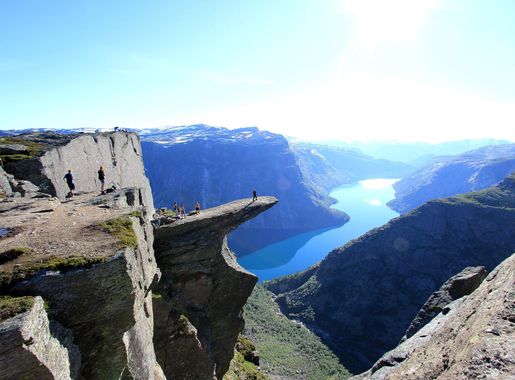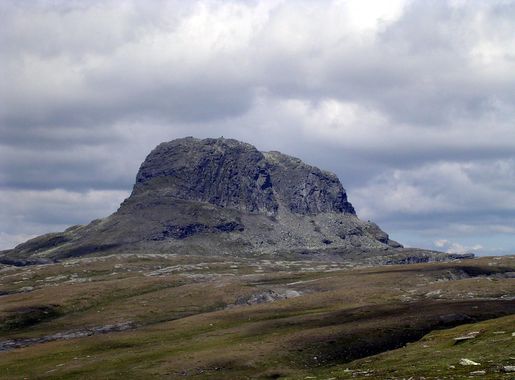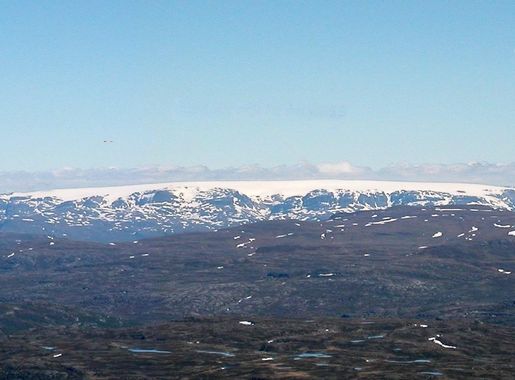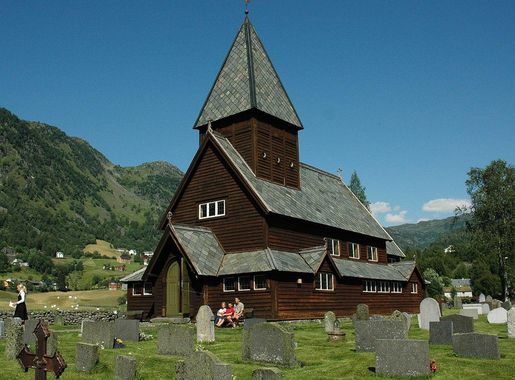
Hardangervidda National Park: Norway's Untamed Wilderness
Discover Hardangervidda National Park: Norway's largest national park, offering stunning landscapes, diverse wildlife, and endless outdoor adventures.
Hardangervidda National Park is a vast and stunning wilderness area located in Norway, renowned for its expansive plateau and diverse landscapes. The park is the largest national park in Norway, stretching over 3,422 square kilometers. It is a paradise for nature lovers and adventurers, offering a unique combination of mountainous terrain, tranquil lakes, and verdant valleys. One of the most remarkable features of Hardangervidda is its incredible biodiversity. The park is home to Europe's largest herd of wild reindeer, making it a prime destination for wildlife enthusiasts. Bird watchers will also be delighted by the variety of bird species that inhabit the area, including the rare and majestic golden eagle. For those who love outdoor activities, Hardangervidda offers endless opportunities for hiking, fishing, and skiing. The park's well-marked trails cater to all levels of hikers, from easy walks to challenging treks. In winter, the park transforms into a snowy wonderland, perfect for cross-country skiing and snowshoeing. Cultural history is also an integral part of Hardangervidda's charm. Visitors can explore ancient hunting grounds, traditional Sami settlements, and historical routes that date back to the Viking Age. The park's visitor centers provide insightful information about the area's natural and cultural heritage, enhancing the overall experience. Whether you're seeking adventure, tranquility, or a deep connection with nature, Hardangervidda National Park offers an unforgettable escape into one of Norway's most pristine and captivating landscapes.
Local tips in Hardangervidda National Park
- Visit during summer for the best hiking conditions and to see the wild reindeer herds.
- Pack appropriate clothing as the weather can change rapidly, even in summer.
- Use the park's visitor centers for maps and information on trails and wildlife.
- Consider guided tours for a deeper understanding of the park's natural and cultural history.
- In winter, ensure you have the right gear for cross-country skiing or snowshoeing.
- Respect the natural environment by staying on marked trails and following Leave No Trace principles.
Hardangervidda National Park: Norway's Untamed Wilderness
Hardangervidda National Park is a vast and stunning wilderness area located in Norway, renowned for its expansive plateau and diverse landscapes. The park is the largest national park in Norway, stretching over 3,422 square kilometers. It is a paradise for nature lovers and adventurers, offering a unique combination of mountainous terrain, tranquil lakes, and verdant valleys. One of the most remarkable features of Hardangervidda is its incredible biodiversity. The park is home to Europe's largest herd of wild reindeer, making it a prime destination for wildlife enthusiasts. Bird watchers will also be delighted by the variety of bird species that inhabit the area, including the rare and majestic golden eagle. For those who love outdoor activities, Hardangervidda offers endless opportunities for hiking, fishing, and skiing. The park's well-marked trails cater to all levels of hikers, from easy walks to challenging treks. In winter, the park transforms into a snowy wonderland, perfect for cross-country skiing and snowshoeing. Cultural history is also an integral part of Hardangervidda's charm. Visitors can explore ancient hunting grounds, traditional Sami settlements, and historical routes that date back to the Viking Age. The park's visitor centers provide insightful information about the area's natural and cultural heritage, enhancing the overall experience. Whether you're seeking adventure, tranquility, or a deep connection with nature, Hardangervidda National Park offers an unforgettable escape into one of Norway's most pristine and captivating landscapes.
When is the best time to go to Hardangervidda National Park?
Iconic landmarks you can’t miss
Vøringsfossen
Experience the breathtaking Vøringsfossen Waterfall in Eidfjord, Norway - a stunning natural marvel surrounded by lush landscapes and dramatic cliffs.
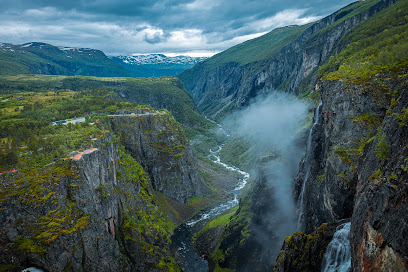
Norsk Natursenter Hardanger
Experience the natural beauty of Norway at Norsk Natursenter Hardanger, your gateway to stunning landscapes and educational exhibits.
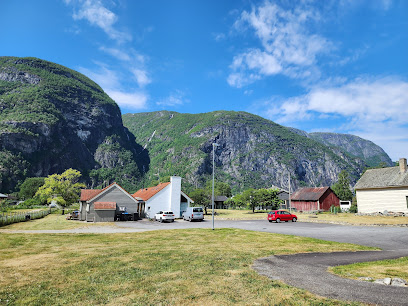
Skaupsjøen/Hardangerjøkulen landskapsvernområde
Explore the breathtaking landscapes of Skaupsjøen and Hardangerjøkulen National Park, a paradise for nature lovers and adventure seekers in Norway.
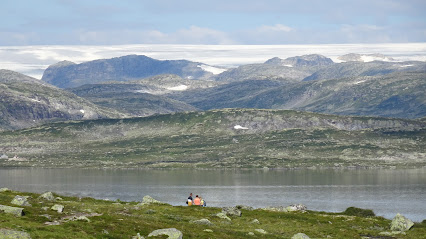
Hardangervidda National Park Center
Explore the beauty of Norway at Hardangervidda National Park Center, your gateway to stunning landscapes, nature trails, and local delicacies.
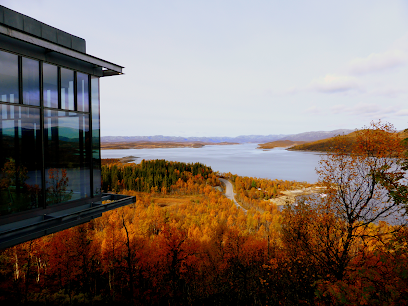
Lilletopp (Hardanger)
Experience the breathtaking scenery and adventurous hiking trails of Lilletopp in Hardanger, Norway's outdoor paradise.
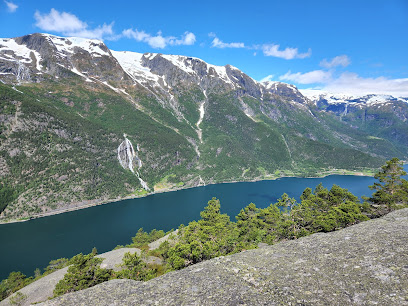
Kjeåsen
Experience the breathtaking beauty and rich history of Kjeåsen, a must-visit tourist attraction in Norway's Eidfjord region.
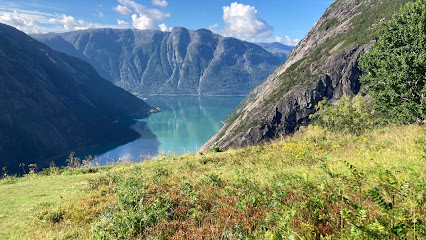
Nyastølfossen
Experience the breathtaking beauty of Nyastølfossen, a stunning waterfall in Kinsarvik, Norway, perfect for nature lovers and photographers.
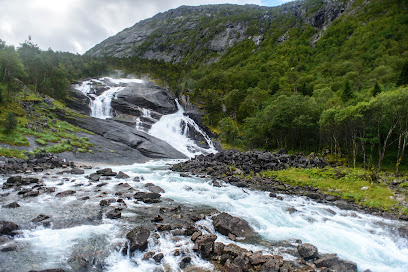
Samegammene
Experience the serene charm of Samegammene Park, a lush green escape in Hol, Norway, perfect for nature lovers and outdoor enthusiasts.
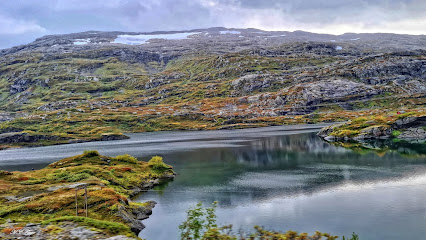
Vøringsfossen utsiktspunkt
Discover the breathtaking views at Vøringsfossen Utsiktspunkt, a must-visit scenic spot showcasing Norway's natural beauty and majestic waterfalls.
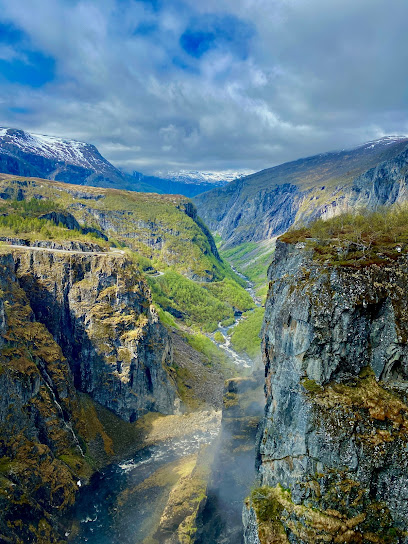
Nykkjesøyfossen
Experience the breathtaking beauty of Nykkjesøyfossen, a stunning waterfall in Norway that's perfect for nature lovers and adventure seekers.
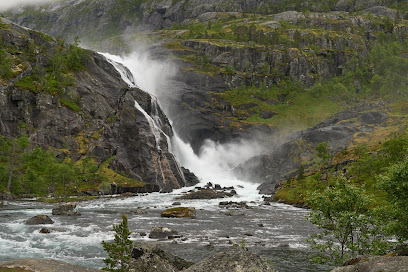
Turistveg: Røldalsfjellet (Scenic road)
Experience the unmatched beauty of Røldalsfjellet, Norway's scenic road, where stunning landscapes and rich culture await every traveler.
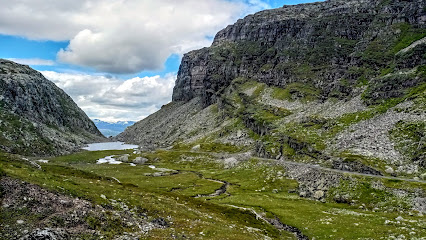
Hardangervidda
Explore the breathtaking landscapes, diverse wildlife, and exhilarating trails of Hardangervidda, Norway's largest mountain plateau and a nature lover's paradise.
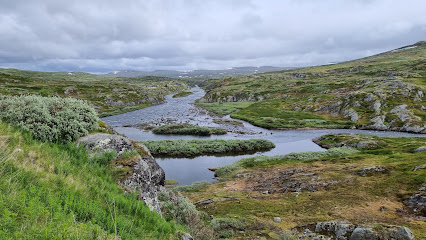
Cruise Pirs Eidfjord
Experience the breathtaking beauty of Cruise Pirs Eidfjord, where nature, culture, and culinary delights converge in a stunning Norwegian landscape.
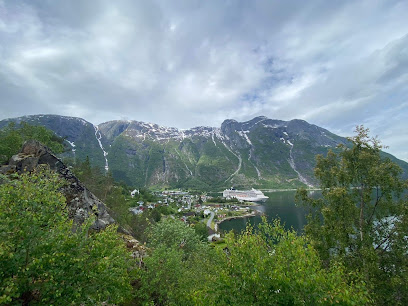
Hardanger Bridge Viewpoint
Discover the stunning Hardanger Bridge Viewpoint, where natural beauty meets architectural marvel in breathtaking Norway.
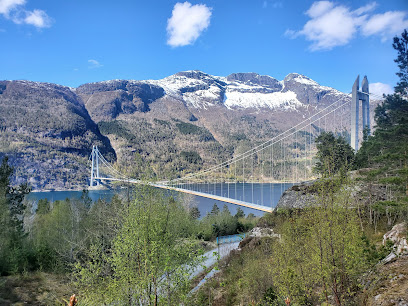
Hardangervidda Nasjonalparksenter
Discover the breathtaking landscapes and rich heritage of Hardangervidda at the National Park Center in Norway, your gateway to adventure.
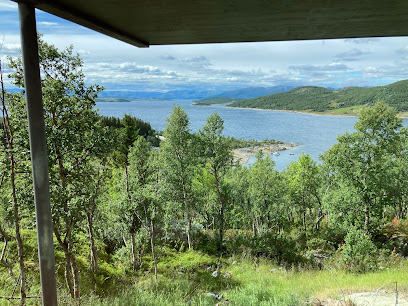
Unmissable attractions to see
Trolltunga Troll's Tongue
Experience the breathtaking beauty of Trolltunga, a stunning rock formation offering panoramic views of Norway's breathtaking landscapes.
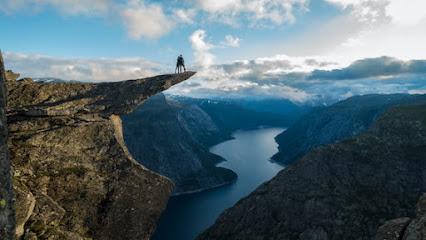
Trolltunga
Explore the breathtaking Trolltunga, Norway's iconic rock formation offering stunning views and an unforgettable hiking adventure.
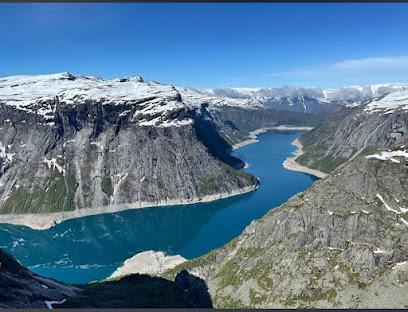
Skaupsjøen/Hardangerjøkulen landskapsvernområde
Explore the stunning landscapes and tranquility of Skaupsjøen in Hardangerjøkulen National Park – a true Norwegian gem for nature lovers.
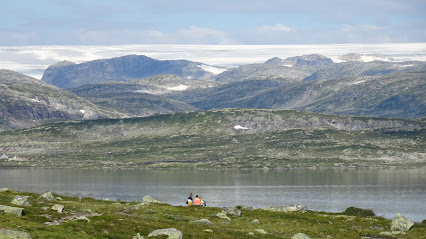
Prestholtseter
Experience the breathtaking natural beauty and outdoor adventures at Prestholtseter, a hidden gem in Geilo, Norway.
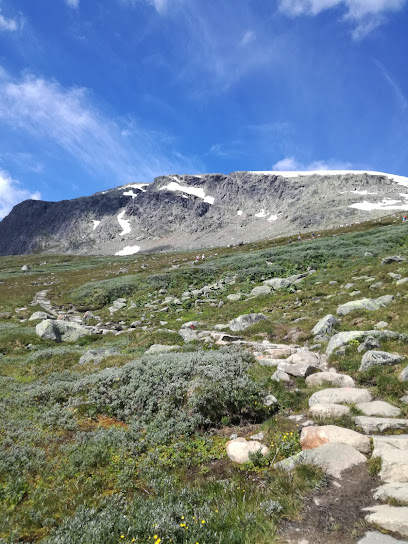
Hardangervidda National Park Center
Explore Hardangervidda National Park Center: Your gateway to Norway's pristine nature, rich culture, and unforgettable outdoor adventures.
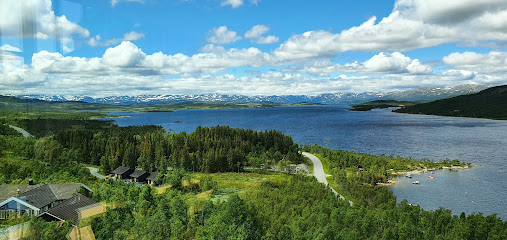
Tjørnadalsfossen
Discover the breathtaking beauty of Tjørnadalsfossen in Odda, Norway, where nature's splendor meets serene landscapes in a captivating waterfall experience.
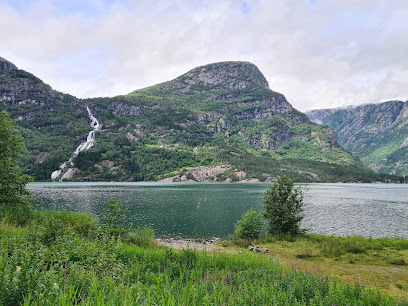
Queen Sonja's Panoramic Hiking Trail
Experience breathtaking views and nature's beauty on Queen Sonja's Panoramic Hiking Trail in Norway's stunning Hardangerfjord region.
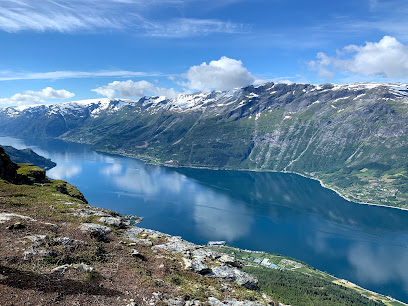
Norwegian Museum of Hydropower and Industry
Explore the Norwegian Museum of Hydropower and Industry, where history meets innovation in energy production.
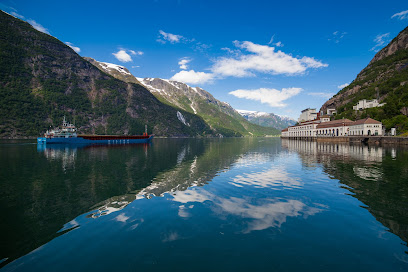
Nykkjesøyfossen
Discover the breathtaking beauty of Nykkjesøyfossen in Kinsarvik, Norway – a natural wonder that enchants every visitor with its serene allure.
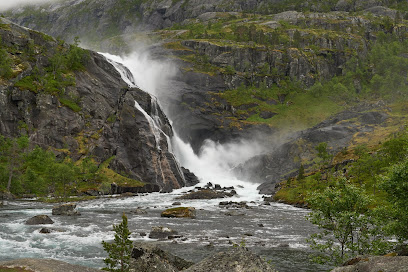
Ringedals Dam
Discover the stunning beauty and engineering marvel of Ringedals Dam in Tyssedal, Norway, surrounded by majestic mountains and serene waters.
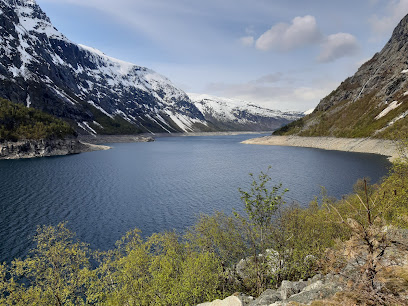
Ravenheart
Explore Viking history and local heritage at Ravenheart Museum in Eidfjord, Norway – a captivating experience for history lovers and tourists alike.
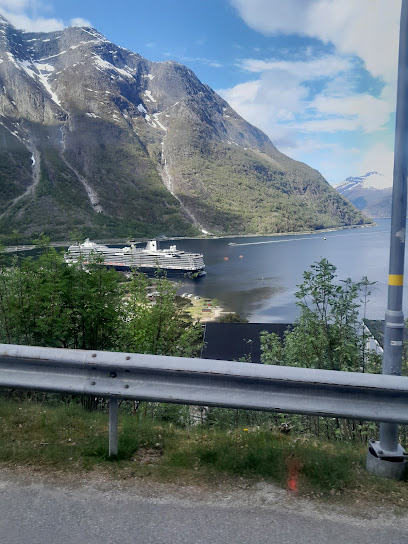
Hardangervidda
Experience the breathtaking landscapes and diverse wildlife of Hardangervidda, Norway's largest mountain plateau, ideal for outdoor adventures and nature exploration.

Hardangervidda Nasjonalparksenter
Discover the natural beauty and cultural heritage of Norway at Hardangervidda Nasjonalparksenter, your gateway to adventure in the stunning Hardangervidda National Park.
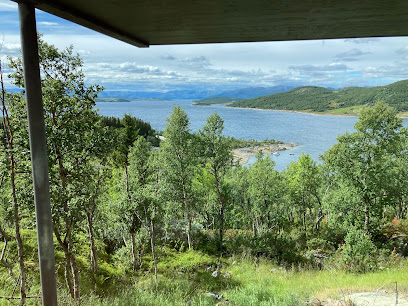
Kulufossen
Experience the breathtaking beauty of Kulufossen Waterfall, a serene escape in Ål, Norway, where nature and adventure await.
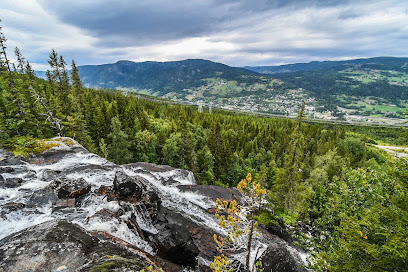
Reinanuten view point
Discover the breathtaking beauty of Reinanuten View Point in Odda, Norway, where stunning landscapes and serene nature await every visitor.

Essential places to dine
Dyranut Fjellstova
Experience authentic Norwegian hospitality at Dyranut Fjellstova - where traditional cuisine meets stunning natural beauty in Eidfjord.
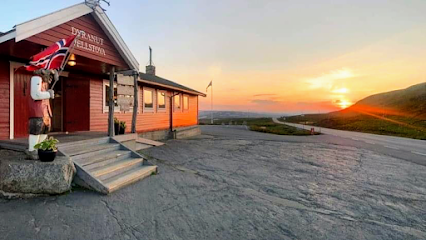
Halne Fjellstugu
Experience authentic Norwegian cuisine at Halne Fjellstugu while soaking in breathtaking views of Vøringsfoss's stunning landscapes.
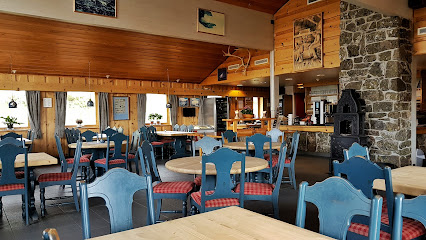
Glacier Restaurant, Bar & Cafe
Discover Glacier Restaurant: A culinary gem in Odda offering diverse European and global dishes alongside vegan and gluten-free options.
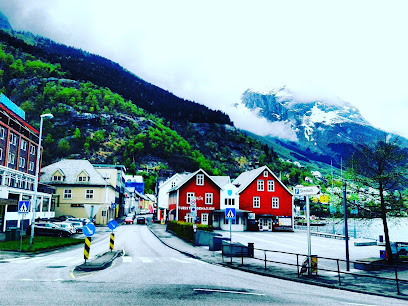
KOMPAEN - Bistro og Deli
Experience authentic Norwegian flavors at KOMPAEN - Bistro og Deli in Lofthus, where every meal is crafted with care and local ingredients.

Hardangerviddahallen
Discover authentic Norwegian cuisine amidst stunning landscapes at Hardangerviddahallen in Øvre Eidfjord.
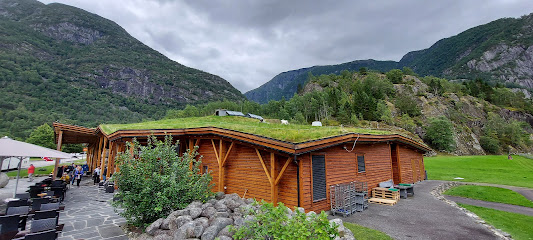
Burger og brus
Discover Burger og brus: A must-visit gastropub in Eidfjord known for gourmet burgers and a cozy atmosphere amidst stunning Norwegian scenery.
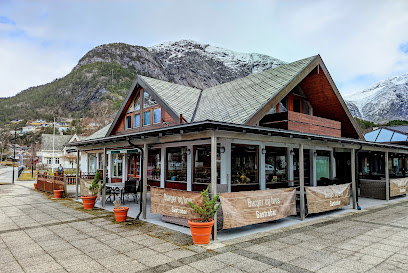
Sjel og gane bar og restaurant
Discover the culinary delights at Sjel og Gane bar og restaurant in Eidfjord – where local flavors meet warm hospitality.
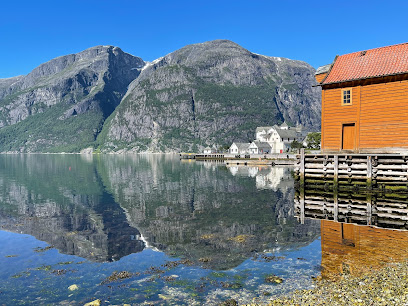
Vik Café & Restaurant
Experience authentic Norwegian cuisine amidst breathtaking landscapes at Vik Café & Restaurant in Eidfjord.
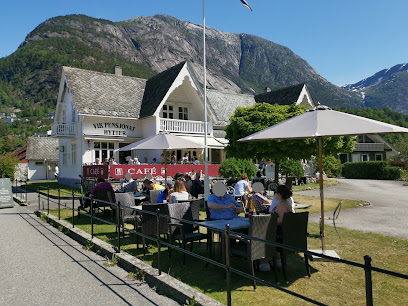
Siderhuset Ola K
Experience exquisite dining at Siderhuset Ola K with breathtaking fjord views and a menu that celebrates local flavors.
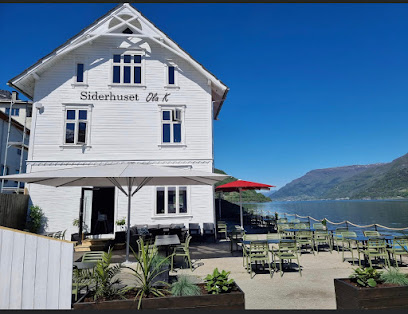
Lægreid Høyfjellsseter
Discover Lægreid Høyfjellsseter: A top-rated burger restaurant set against Norway's stunning mountain backdrop.
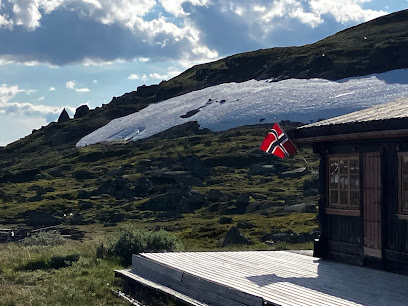
Stigstuv turisthytte AS
Discover Stigstuv Turisthytte: A picturesque restaurant and cottage in Eidfjord offering authentic Norwegian cuisine amidst stunning landscapes.

Markets, malls and hidden boutiques
Hardangervidda National Park
Explore the breathtaking landscapes and rich wildlife of Hardangervidda National Park, Norway's largest national park and a haven for outdoor enthusiasts.

Norsk Natursenter Hardanger
Experience the beauty of Norway's nature at Norsk Natursenter Hardanger, where education meets stunning landscapes and delicious local cuisine.
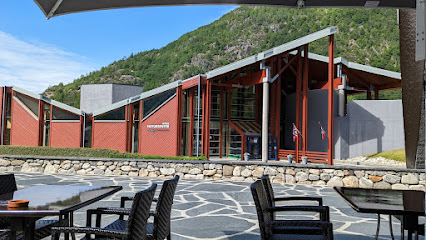
Dyranut Fjellstova
Experience the warmth of traditional Norwegian hospitality at Dyranut Fjellstova, where stunning landscapes meet authentic local cuisine.
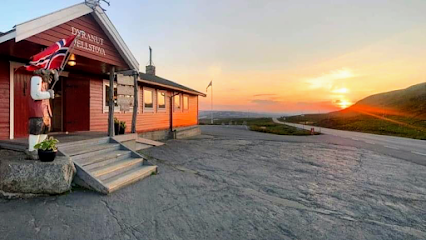
Skaupsjøen/Hardangerjøkulen landskapsvernområde
Explore the Skaupsjøen/Hardangerjøkulen Landscape Reserve: A breathtaking blend of lakes, glaciers, and hiking trails in Norway's stunning wilderness.
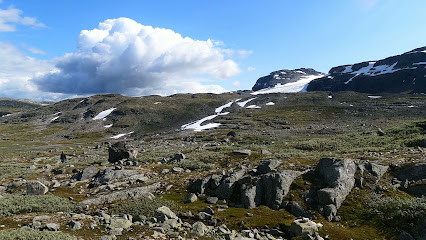
Halne Fjellstugu
Experience the flavors of Norway at Halne Fjellstugu, where culinary delights meet breathtaking views in the heart of Hardangervidda.
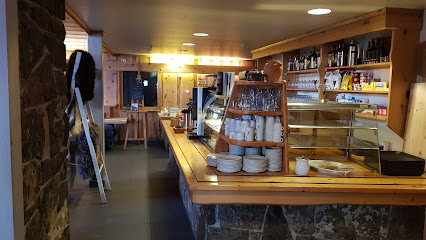
Hardangervidda National Park Center
Explore the natural wonders at Hardangervidda National Park Center, your gateway to Norway's breathtaking landscapes and rich biodiversity.
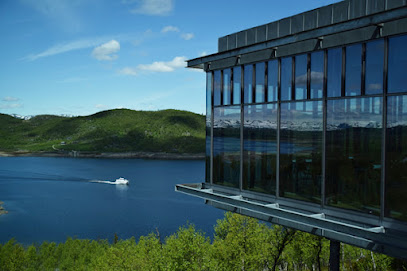
Garen Camping
Discover the tranquility of Garen Camping in Hardangervidda, where cozy cabins meet stunning natural beauty for an unforgettable escape.

Hardangerviddahallen
Experience the essence of Norwegian cuisine in the stunning landscapes of Hardangerviddahallen, Øvre Eidfjord.
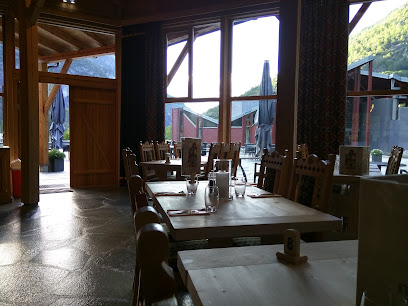
Kalhovd cabin
Experience the tranquility of Kalhovd Cabin, a perfect mountain retreat in Norway for nature lovers and adventure seekers.

Samegammene
Explore the serene beauty of Samegammene Park in Hol, Norway - a perfect retreat for nature lovers and outdoor enthusiasts.
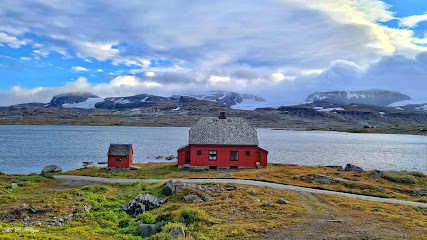
Dyranut Turisthytta
Explore the stunning landscapes of Hardangervidda at Dyranut Turisthytta, the perfect mountain cabin for relaxation and local cuisine.

Nykkjesøyfossen
Experience the breathtaking Nykkjesøyfossen Waterfall, a natural wonder in Kinsarvik, Norway, perfect for nature lovers and adventure seekers.
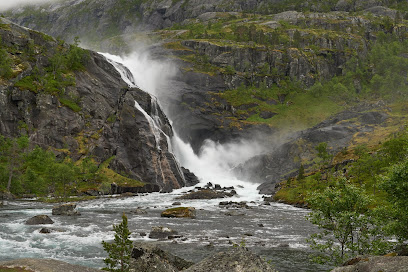
Ulvik Frukt & Cideri
Experience the taste of Norway at Ulvik Frukt & Cideri, a charming farm shop offering exquisite ciders and local produce in a breathtaking setting.
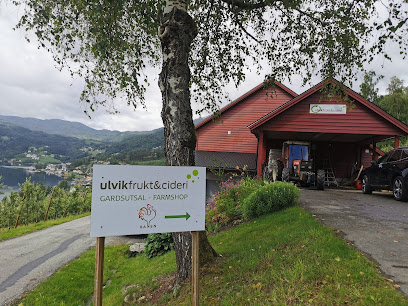
Rauhelleren DNT cabin
Discover the charm of Rauhelleren DNT Cabin, a serene mountain retreat in Uvdal, perfect for adventurers and nature lovers seeking tranquility.
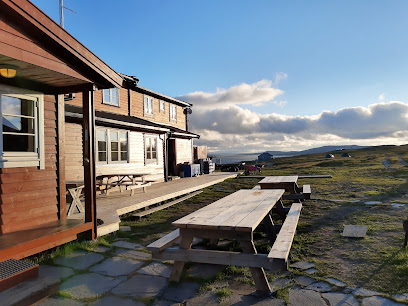
Hardangervidda
Experience the stunning landscapes and vibrant wildlife of Hardangervidda, Norway's largest mountain plateau, perfect for outdoor adventures.
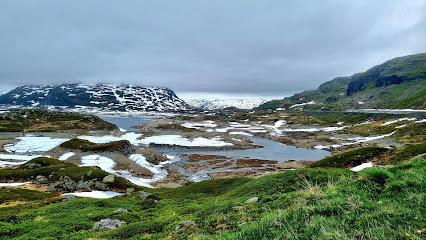
Essential bars & hidden hideouts
Dyranut Fjellstova
Discover the charm of Dyranut Fjellstova, where traditional Norwegian hospitality meets stunning landscapes for an unforgettable getaway.
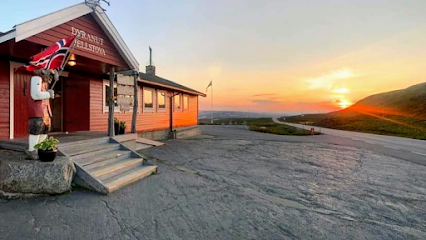
Halne Fjellstugu
Experience authentic Norwegian cuisine at Halne Fjellstugu, nestled in the stunning landscapes of Vøringsfoss, perfect for every food lover.
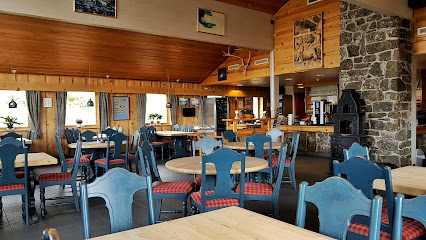
Glacier Restaurant, Bar & Cafe
Experience a delightful fusion of European, Middle Eastern, and Indian cuisines at Glacier Restaurant, Bar & Café in scenic Odda.
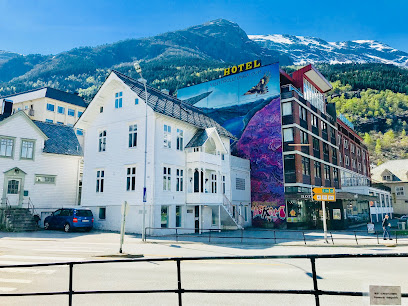
Hardangerviddahallen
Experience authentic Norwegian cuisine with breathtaking views at Hardangerviddahallen in Øvre Eidfjord.
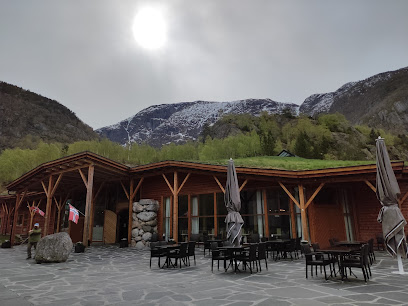
Burger og brus
Experience the heart of Eidfjord at Burger og brus, a cozy gastropub serving delicious bar food in a welcoming atmosphere.
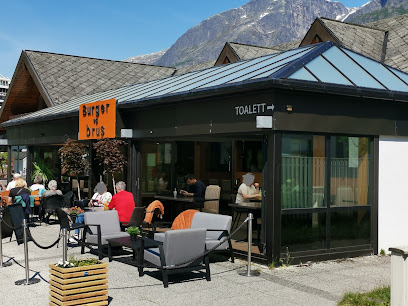
Den Lykkelige Sportsmann
Experience the perfect blend of hospitality at Den Lykkelige Sportsmann in Rjukan, where local flavors and comfort meet in a stunning Norwegian setting.
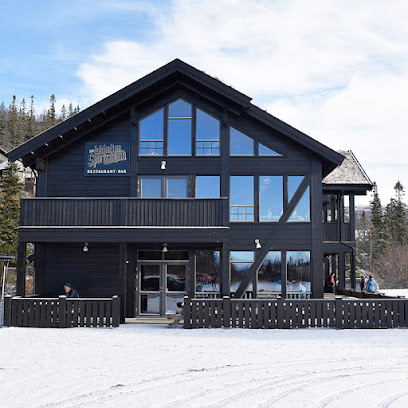
Lofthus Ekspedisjon
Discover Lofthus Ekspedisjon, a unique brewpub offering craft beers, ciders, and pizzas in a stunning Norwegian setting.
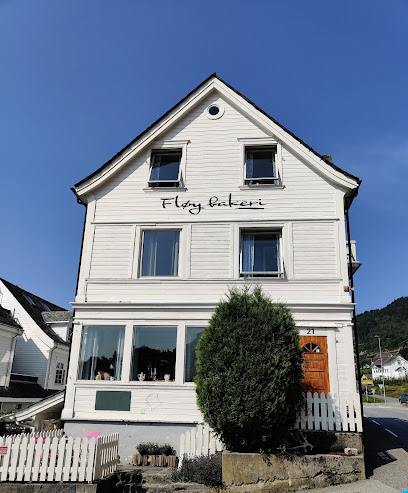
Vertshuset
Discover the essence of Odda at Vertshuset, where local charm meets a cozy bar atmosphere and a delightful selection of drinks.
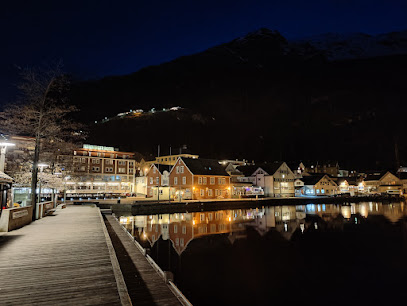
Off Pist Lounge
Experience vibrant nightlife at Off Pist Lounge in Geilo, where cocktails, music, and a lively atmosphere await you.

ONKLSAM.NO
Experience local charm at ONKLSAM.NO, a cozy pub in Rjukan, Norway, where great drinks and friendly faces meet.
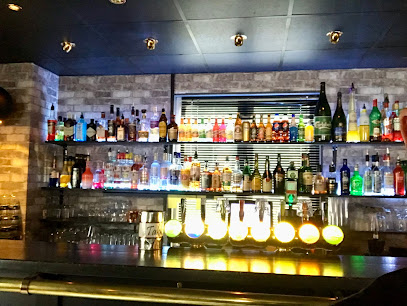
Sportsbar 1909
Discover the ultimate sports experience at Sportsbar 1909 in Geilo, where great food and live action come together in a vibrant atmosphere.
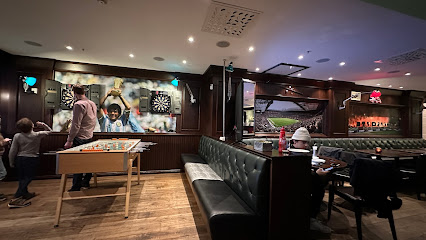
Krossen Pub
Discover the warmth of Norwegian hospitality at Krossen Pub, a charming spot for relaxation and local brews in the heart of Rauland.
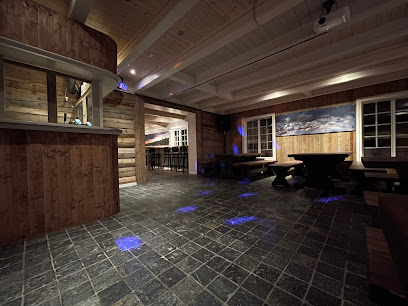
Pergola i Odda
Discover the charm of Pergola i Odda, a hidden wine bar gem in Odda, offering a delightful selection of local and international wines in a cozy atmosphere.

Kirk's Bar
Discover the charm of Kirk's Bar in Rjukan, where cozy ambiance meets an exquisite selection of drinks for an unforgettable experience.
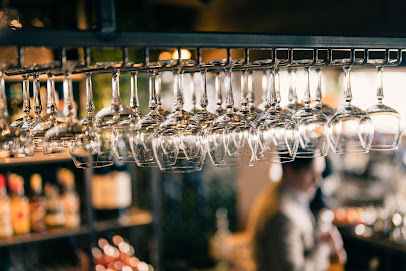
Best Adventures Cafe and Restaurant
Savor the best pizza amidst the stunning landscapes of Øvre Eidfjord at Best Adventures Cafe and Restaurant – a must-visit for food enthusiasts!
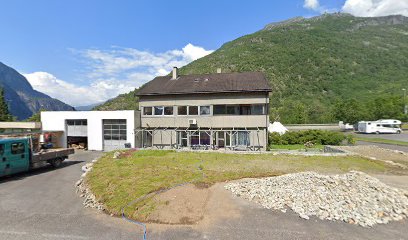
Local Phrases about Hardangervidda National Park
-
- HelloHei
[hay] - GoodbyeHa det
[ha deh] - YesJa
[yah] - NoNei
[nay] - Please/You're welcomeVær så god
[vair soh goh] - Thank youTakk
[tahk] - Excuse me/SorryUnnskyld
[oon-skuld] - How are you?Hvordan har du det?
[vohr-dan har doo deh] - Fine. And you?Bra. Og du?
[bra oh doo] - Do you speak English?Snakker du engelsk?
[snah-ker doo eng-elsk] - I don't understandJeg forstår ikke
[yay for-stor eek-keh]
- HelloHei
-
- I'd like to see the menu, pleaseKan jeg få se menyen, takk
[kahn yai foh seh meh-nyen tahk] - I don't eat meatJeg spiser ikke kjøtt
[yay spee-ser eek-keh shut] - Cheers!Skål!
[skohl] - I would like to pay, pleaseJeg vil gjerne betale, takk
[yay veal yair-neh bet-ah-leh tahk]
- I'd like to see the menu, pleaseKan jeg få se menyen, takk
-
- Help!Hjelp!
[yelp] - Go away!Gå vekk!
[goh vehk] - Call the Police!Ring politiet!
[ring poh-lee-tee-eh] - Call a doctor!Ring en lege!
[ring en leh-geh] - I'm lostJeg er tapt
[yay air tahpt] - I'm illJeg er syk
[yay air sook]
- Help!Hjelp!
-
- I'd like to buy...Jeg vil kjøpe...
[yay veal shoop-eh] - I'm just lookingJeg bare ser
[yay bah-reh sair] - How much is it?Hvor mye koster det?
[vor mee-eh kus-teh deh] - That's too expensiveDet er for dyrt
[deh air for deert] - Can you lower the price?Kan du senke prisen?
[kahn doo sen-keh pree-sen]
- I'd like to buy...Jeg vil kjøpe...
-
- What time is it?Hva er klokka?
[vah air klok-ah] - It's one o'clockKlokka er ett
[klok-ah air et] - Half past (10)Halv ti
[halv tee] - MorningMorgen
[mohr-gen] - AfternoonEttermiddag
[et-ter-mee-dahg] - EveningKveld
[kvehld] - YesterdayI går
[ee gohr] - TodayI dag
[ee dahg] - TomorrowI morgen
[ee mohr-gen] - 1En
[ehn] - 2To
[too] - 3Tre
[tray] - 4Fire
[fee-reh] - 5Fem
[fem] - 6Seks
[sehks] - 7Syv
[soov] - 8Åtte
[oht-teh] - 9Ni
[nee] - 10Ti
[tee]
- What time is it?Hva er klokka?
-
- Where's a/the...?Hvor er en/et...?
[vor air en/et] - What's the address?Hva er adressen?
[vah air ah-dress-en] - Can you show me (on the map)?Kan du vise meg (på kartet)?
[kahn doo vee-seh may (poh kart-eh)] - When's the next (bus)?Når går neste (buss)?
[nahr gohr nes-teh (boos)] - A ticket (to ....)En billett (til ....)
[ehn bee-leht (teel)]
- Where's a/the...?Hvor er en/et...?
History of Hardangervidda National Park
-
Hardangervidda's vast plateau has been home to human activity since the Mesolithic era, approximately 9,000 years ago. Archaeological findings, such as tools and hunting camps, reveal that nomadic hunter-gatherers roamed this region, relying on its rich wildlife and natural resources for survival.
-
During the Viking Age (8th to 11th centuries), Hardangervidda served as a crucial travel route for Viking explorers and traders. The highland plateau offered a natural corridor between eastern and western Norway, facilitating the movement of goods, people, and cultural ideas. Evidence of ancient paths and burial mounds hint at the significance of this area during this period.
-
Reindeer hunting has been a central aspect of Hardangervidda's culture for centuries. The indigenous Sami people and later Norwegian settlers relied heavily on reindeer for food, clothing, and tools. Traditional hunting methods, such as the use of bow and arrows and later firearms, were passed down through generations, highlighting the region’s deep-rooted connection to its wildlife.
-
Hardangervidda played a pivotal role during World War II, particularly in the famous heavy water sabotage missions. Norwegian resistance fighters, known as the 'Heroes of Telemark,' used the rugged terrain of the plateau to launch successful operations against the German-controlled Vemork hydroelectric plant, which was producing heavy water for nuclear weapons research. These daring missions significantly hindered Nazi Germany's atomic ambitions.
-
In 1981, Hardangervidda was officially designated as a national park, covering an impressive 3,422 square kilometers. The park's establishment aimed to preserve its unique alpine ecosystem, protect its diverse flora and fauna, and maintain the cultural heritage of the region. Today, Hardangervidda National Park stands as a testament to Norway's commitment to environmental conservation and sustainable tourism.
-
The Sami people, indigenous to the Nordic countries, have a long-standing presence in Hardangervidda. Their traditional lifestyle, including reindeer herding, fishing, and crafting, is an integral part of the region's cultural fabric. The Sami's deep knowledge of the land and its resources has been passed down through generations, contributing to the rich cultural heritage of Hardangervidda.
Hardangervidda National Park Essentials
-
Hardangervidda National Park is accessible from several major cities in Norway. The nearest airports are Oslo Gardermoen (OSL) and Bergen Airport (BGO). From Oslo, you can take a train to Geilo or Finse, which are popular gateways to the park. From Bergen, you can take a train to Voss or Myrdal. Both train routes offer scenic views and connect to local transportation options that lead into the national park.
-
Within Hardangervidda National Park, the primary modes of transportation are hiking, biking, and cross-country skiing, depending on the season. Public buses run to the park's periphery, and local taxis are available for hire. For those looking to explore remote areas, renting a car is advisable. Additionally, there are several guided tour operators offering transportation and guided hikes within the park.
-
The official currency in Norway is the Norwegian Krone (NOK). Credit cards are widely accepted in most hotels, shops, and restaurants. However, it's recommended to carry some cash, especially when venturing into more remote areas of the park where electronic payment facilities may be limited. ATMs are available in nearby towns such as Geilo and Odda.
-
Hardangervidda National Park is generally a safe destination for tourists. However, it is important to be prepared for the natural elements, as weather conditions can change rapidly. Always inform someone of your itinerary before heading out. There are no specific high-crime areas targeting tourists, but standard precautions such as not leaving valuables unattended are advisable.
-
In case of an emergency, dial 112 for immediate assistance. There are local medical facilities in towns like Geilo and Odda, but it is recommended to have travel insurance that covers medical emergencies. For minor health issues, pharmacies are available in nearby towns. Always carry a well-equipped first aid kit when exploring the park.
-
Fashion: Do wear layers and waterproof clothing suitable for changing weather conditions. Avoid wearing cotton as it retains moisture. Religion: Do respect local customs and traditions, although the park itself is not religiously significant. Public Transport: Do purchase tickets in advance and validate them as required. Don’t eat or drink on public transport. Greetings: Do greet people with a friendly 'Hei' (Hello). A handshake is also common. Eating & Drinking: Do try local delicacies like ‘rømmegrøt’ (sour cream porridge) and ‘rakfisk’ (fermented fish). Don’t refuse hospitality, as it is considered impolite.
-
To experience Hardangervidda National Park like a local, consider visiting during the off-peak seasons of spring and autumn. Engage with local guides who can share hidden gems and lesser-known trails. Participate in traditional activities such as fishing and berry picking. Don’t miss the chance to visit the Norwegian Wild Reindeer Centre at Skinnarbu, which offers insights into the park’s wildlife and conservation efforts.
Trending Landmarks in Hardangervidda National Park
-
Vøringsfossen
-
Norsk Natursenter Hardanger
-
Skaupsjøen/Hardangerjøkulen landskapsvernområde
-
Hardangervidda National Park Center
-
Lilletopp (Hardanger)
-
Kjeåsen
-
Nyastølfossen
-
Samegammene
-
Vøringsfossen utsiktspunkt
-
Nykkjesøyfossen
-
Turistveg: Røldalsfjellet (Scenic road)
-
Hardangervidda
-
Cruise Pirs Eidfjord
-
Hardanger Bridge Viewpoint
-
Hardangervidda Nasjonalparksenter
Nearby Cities to Hardangervidda National Park
-
Things To Do in Stavanger
-
Things To Do in Oslo
-
Things To Do in Fredrikstad
-
Things To Do in Kristiansand
-
Things To Do in Ålesund
-
Things To Do in Molde
-
Things To Do in Skagen
-
Things To Do in Karlstad
-
Things To Do in Frederikshavn
-
Things To Do in Aalborg
-
Things To Do in Gothenburg
-
Things To Do in Trondheim
-
Things To Do in Viborg
-
Things To Do in Randers
-
Things To Do in Örebro

